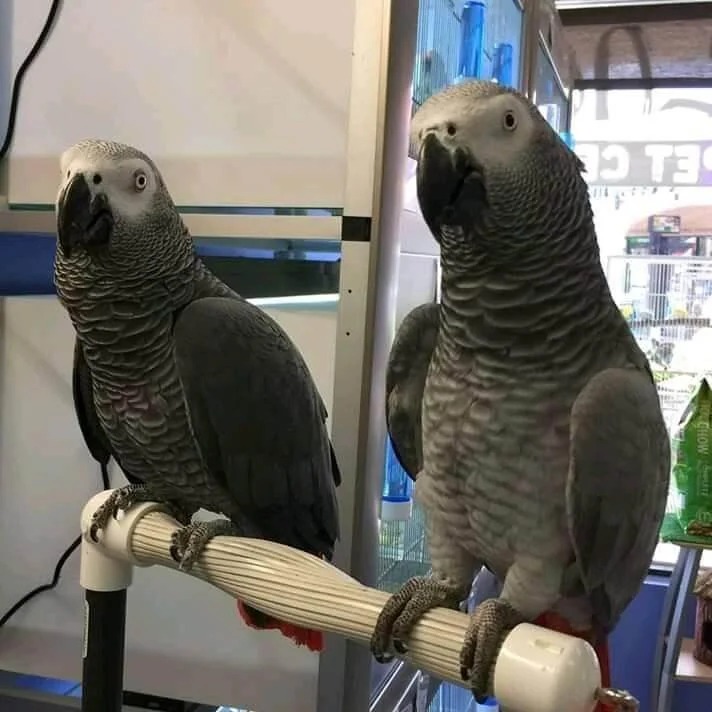The Blue African Grey Parrot: A Comprehensive Guide
The Blue African Grey Parrot, a flamboyant and smart types, is one of nature's most captivating bird marvels. Prominent for its striking color, exceptional intelligence, and affectionate personality, this parrot has won the hearts of bird enthusiasts around the globe. This article explores the different elements of the Blue African Grey Parrot, covering its attributes, care requirements, and other necessary details for potential owners.
1. Attributes of the Blue African Grey Parrot
The Blue African Grey Parrot is a spectacular bird marked by its lively blue plumage, which contrasts considerably with its gray feathers. The parrot is known for its smart and playful nature, making it one of the most popular companion birds.

Physical Features
| Function | Description |
|---|
| Size | Approximately 12 to 14 inches in length |
| Weight | Varieties in between 400 to 600 grams |
| Life expectancy | Can live for 30-50 years in captivity |
| Coloration | Mostly gray with striking blue accents on the wings and tail |
| Beak | Strong and curved beak |
Behavior and Temperament
- Smart: Blue African Grey Parrots are understood for their problem-solving skills and ability to imitate sounds and human speech.
- Social: These birds thrive on interaction and companionship and can end up being extremely connected to their owners.
- Playful: They require stimulation and playtime to avoid boredom and establish healthy habits.
2. Environment and Diet
Developing an ideal environment and supplying the best diet plan is vital for the wellness of these amazing birds.
Perfect Habitat
- Cage Size: A large cage with a minimum size of 24 inches broad, 24 inches deep, and 36 inches high is advised.
- Ecological Enrichment: Provide toys, sets down, and chances for flying to keep their mind and body engaged.
- Temperature level: Maintain a comfy indoor temperature level between 65 ° F to 80 ° F(18 ° C
to 27 ° C). Diet Essentials A balanced
diet plan is vital for the health of the Blue African Grey Parrot. Necessary food items consist of:
- High-quality pellets
- Fresh fruits (e.g., apples, bananas, berries)
- Fresh vegetables (e.g., carrots, leafy greens, bell peppers)
- Seeds and nuts in moderation
3. Health Considerations
The health of the Blue African Grey Parrot is paramount. Regular veterinary check-ups are essential for early detection and prevention of health problems.
Common Health Issues
- Breathing infections
- Feather plucking (frequently due to stress)
- Obesity due to inappropriate diet
Signs of Illness
- Decreased appetite
- lethargy
- Changes in plume condition
- Modifications in droppings
4. Training a Blue African Grey Parrot
Training is essential not only for behavioral management but also for strengthening the bond in between the parrot and its owner.
Tips for Effective Training
- Start Early: Early socialization and training lead to better-behaved birds.
- Positive Reinforcement: Use deals with and appreciation to encourage good habits.
- Consistency is Key: Establish a routine with commands and training sessions.
Typical Commands to Teach
- Step Up: A fundamental command for getting the bird to come to you.
- Come: Encourages the bird to return to its perch or handler.
- No: Important for discouraging unwanted behaviors.
5. Often Asked Questions (FAQs)
1. What is the life expectancy of a Blue African Grey Parrot?
A well-cared-for Blue african blue parrot for sale Grey can live in between 30 to 50 years, making them a long-lasting commitment.
2. Do Blue African Grey Parrots need a lot of social interaction?
Yes, these parrots are social creatures that flourish on interaction. Daily engagement and friendship are important for their well-being.
3. Can a Blue African Grey Parrot talk?
Definitely! They are understood for their extraordinary capabilities to imitate human speech and other sounds.

4. What are the signs that my Blue African Grey Parrot is unhappy?
Signs of an unhappy parrot consist of plume plucking, extreme shrieking, aggressiveness, or withdrawal.
5. Is it necessary to supply a different diet?
Yes, a diverse diet of pellets, fruits, and veggies is vital for their nutritional needs and general health.
The Blue Gizmo newborn african grey parrot Grey Parrot is a captivating species that offers friendship, intelligence, and pleasure. However, they need dedication and accountable care to grow. Understanding their environment, dietary needs, and social requirements allows prospective owners to cultivate a healthy, pleased life for these remarkable birds. With the right dedication and environment, a Blue african grey parrots sale Grey can be a treasured family member for years to come.